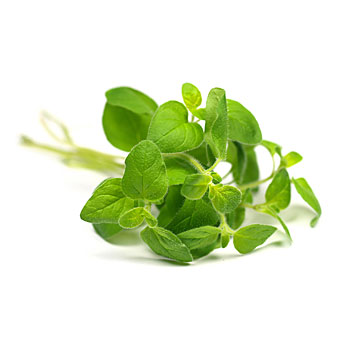Bartoňková I, Dvořák Z Food Chemistry & Toxicology ABSTRACT: Essential oils (EOs) of culinary herbs and spices are used to flavor, color and preserve foods and drinks. Dietary intake of EOs is significant, deserving an attention of toxicologists. We examined the effects of 31 EOs of culinary herbs and spices on the transcriptional activity of human… Read more »

Antifungal and Anti-Biofilm Activity of Essential Oil Active Components against Cryptococcus neoformans and Cryptococcus laurentii
Kumari P, Mishra R, Arora N, Chatrath A, Gangwar R, Roy P, Prasad R Frontiers in Microbiology, 2017 ABSTRACT: Cryptococcosis is an emerging and recalcitrant systemic infection occurring in immunocompromised patients. This invasive fungal infection is difficult to treat due to the ability of Cryptococcus neoformans and Cryptococcus laurentii to form biofilms resistant to standard antifungal treatment…. Read more »
Effect of oregano essential oil and carvacrol on Cryptosporidium parvum infectivity in HCT-8 cells
Gaur S, Kuhlenschmidt TB, Kuhlenschmidt MS, Andrade JE Parasitology International, 2017 ABSTRACT: Cryptosporidium parvum is the second leading cause of persistent diarrhea among children in low-resource settings. This study examined the effect of oregano essential oil (OEO) and carvacrol (CV) on inhibition of C. parvum infectivity in vitro. HCT-8 cells were seeded (1×106) in 96-well microtiter plates… Read more »
Medicinally important aromatic plants with radioprotective activity.
Samarth RM, Samarth M, Matsumoto Y Future Science OA, 2017 ABSTRACT: Aromatic plants are often used as natural medicines because of their remedial and inherent pharmacological properties. Looking into natural resources, particularly products of plant origin, has become an exciting area of research in drug discovery and development. Aromatic plants are mainly exploited for essential oil extraction… Read more »
Antimicrobial activities of gaseous essential oils against Listeria monocytogenes on a laboratory medium and radish sprouts
Lee G, Kim Y, Kim H, Beuchat LR, Ryu JH International Journal of Food Microbiology, 2017 ABSTRACT: The aim of this study was to evaluate the antimicrobial activities of gaseous essential oils (EO gases) against Listeria monocytogenes on the surfaces of a laboratory medium and radish sprouts. We determined the minimal inhibitory concentration (MIC) and minimal lethal… Read more »
Essential oils showing in vitro anti MRSA and synergistic activity with penicillin group of antibiotics
Uzair B, Niaz N, Bano A, Khan BA, Zafar N, Iqbal M, Tahira R, Fasim F Pakistan Journal of Phamracological Science, 2017 ABSTRACT: This study was planned in order to investigate effective essential oils to inhibit in-vitro growth of Methicillin resistant Staphylococcus aureus (MRSA). In this study using disc diffusion method anti MRSA activity of ten diverse essential… Read more »
Antifungal activity of essential oils on two Venturia inaequalis strains with different sensitivities to tebuconazole
Muchembled J, Deweer C, Sahmer K, Halama P Environmental Science and Pollution Research, 2017 ABSTRACT: The antifungal activity of seven essential oils (eucalyptus, clove, mint, oregano, savory, tea tree, and thyme) was studied on Venturia inaequalis, the fungus responsible for apple scab. The composition of the essential oils was checked by gas chromatography-mass spectrometry. Each essential oil had its main compound…. Read more »
Antifungal properties of essential oils for improvement of indoor air quality: a review
Whiley H, Gaskin S, Schroder T, Ross K Reviews on Environmental Health, 2017 ABSTRACT: Concerns regarding indoor air quality, particularly the presence of fungi and moulds, are increasing. The potential for essential oils to reduce, control or remove fungi, is gaining interest as they are seen as a “natural” alternative to synthetic chemical fungicides. This review examines published… Read more »
Selective Essential Oils from Spice or Culinary Herbs Have High Activity against Stationary Phase and Biofilm Borrelia burgdorferi
Feng J, Zhang S, Shi W, Zubcevik N, Miklossy J, Zhang Y Frontiers in Medicine, 2017 ABSTRACT: Although the majority of patients with acute Lyme disease can be cured with the standard 2-4 week antibiotic treatment, about 10-20% of patients continue suffering from chronic symptoms described as posttreatment Lyme disease syndrome. While the cause for this… Read more »
Combined Toxicity of Three Essential Oils Against Aedes aegypti (Diptera: Culicidae) Larvae
Muturi EJ, Ramirez JL, Doll KM, Bowman MJ Journal of Medical Entomology, 2017 ABSTRACT: Essential oils are potential alternatives to synthetic insecticides because they have low mammalian toxicity, degrade rapidly in the environment, and possess complex mixtures of bioactive constituents with multi-modal activity against the target insect populations. Twenty-one essential oils were initially screened for their toxicity against… Read more »
